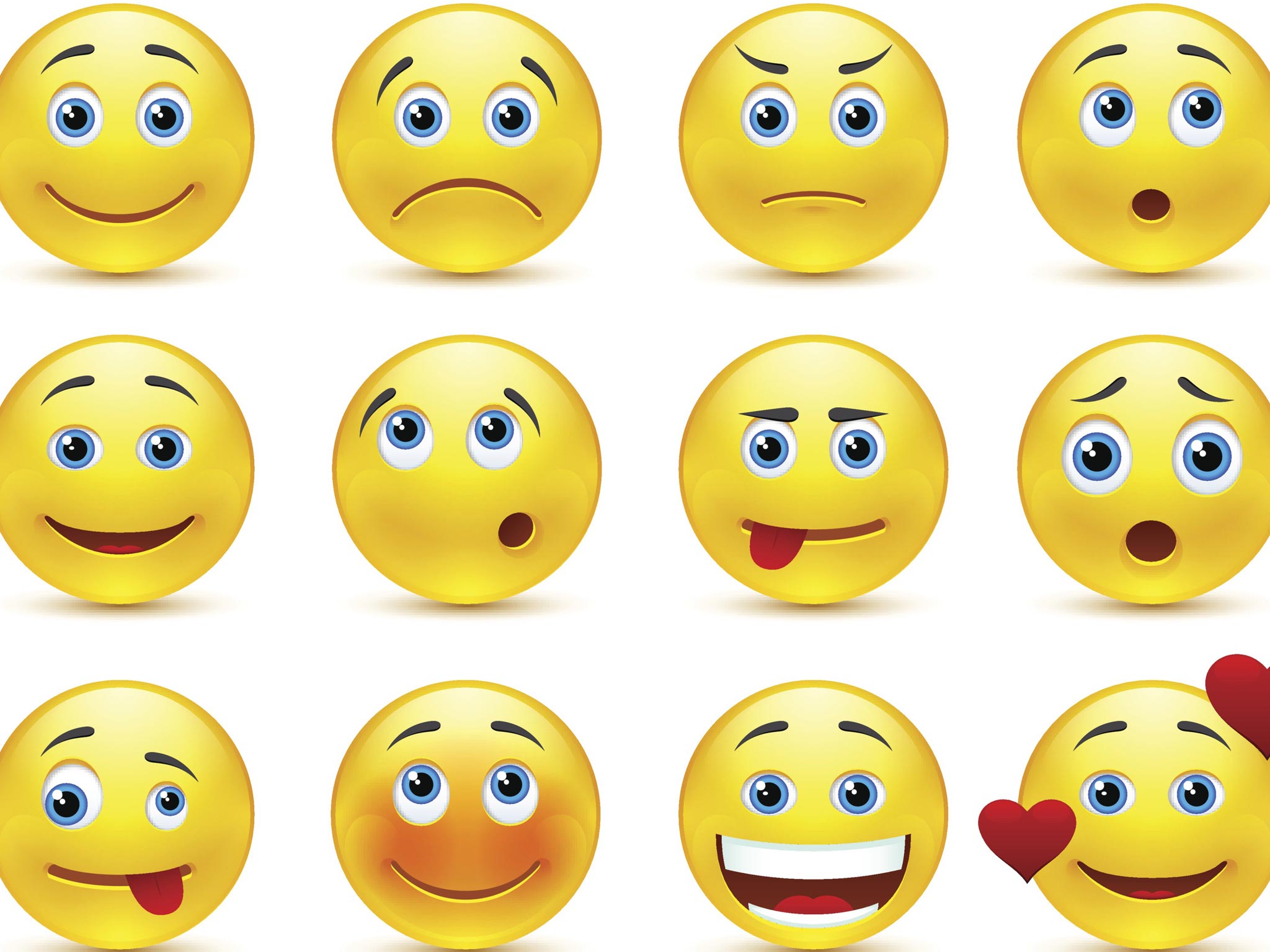Emoticons: a :-) :-) thing
They have become so common in online and SMS conversations that we react to a colon-hyphen-parenthesis in the same way as to a human smile, says Samuel Muston

Your support helps us to tell the story
From reproductive rights to climate change to Big Tech, The Independent is on the ground when the story is developing. Whether it's investigating the financials of Elon Musk's pro-Trump PAC or producing our latest documentary, 'The A Word', which shines a light on the American women fighting for reproductive rights, we know how important it is to parse out the facts from the messaging.
At such a critical moment in US history, we need reporters on the ground. Your donation allows us to keep sending journalists to speak to both sides of the story.
The Independent is trusted by Americans across the entire political spectrum. And unlike many other quality news outlets, we choose not to lock Americans out of our reporting and analysis with paywalls. We believe quality journalism should be available to everyone, paid for by those who can afford it.
Your support makes all the difference.You have probably never met Professor Scott Fahlman of Mellon Carnegie University but, like it or not, he has rewired both your brain and mine. In 1982, the computer science lecturer was writing on an electronic university bulletin board and wanted to make a wisecrack about a lift on campus. So no one thought his joke was a safety warning, he followed his post with a :-) and suggested that his colleagues do the same also promoting :-( as a sign of seriousness.
Within days, the colon-hyphen-parenthesis symbol had spread across the Mellon Carnegie campus; within a month, it had established a beachhead at Stanford University, having hitched a ride in an email. Thirty-two years later, emoticons are as ubiquitous online as Cara Delevingne. "It was kind of like the days of sail ships when explorers would reach a new island, leave and then suddenly there would be a colony of rats where there were none before," says Fahlman. "As the internet spread so did smileys."
With those three little keystrokes, he changed the English language. And not only that – he also changed the way we think. According to a study by Owen Churches in the latest issue of Social Neuroscience, the "metacommunicative pictorial representations of a facial expression" are now so endemic that we respond to them in the same way we would a human face bearing that expression. So, send your friends a :-) and, as long as they are reading it left-to-right, it will ring the same bell in their occipitotemporal cortex as would a toothy grin on your physiog.
It is a remarkable piece of research because it reveals that what started as a "joke marker" for computer programmers and was for much of the past two decades the preserves of tweens on MSN messenger, has now become a lingua franca. It succeeded where Esperanto failed.
How has the emoticon's tentacles acquired such reach? Fahlman puts it down to the casualness of modern communication. "Emails have the informality of conversation. So sarcasm features in them as much as when talking, and it's nice to have a compact way of marking that," he says.
The thing is, though, there have, in the past, been attempts to demonstrate emotional tone in written communication. In 19th-century France, the poet Alcanter de Brahm invented the irony mark "⸮". It never gained anything like the traction of Fahlman's creation, though. The reason for this, says Dacher Keltner, a professor of psychology at University of California, Berkeley, is that our eyes are naturally drawn to things that look like a face. "What emoticons capture," he says, "is the platonic form of facial expression. They mirror the movement of muscles in the face, which is a non-verbal language that predates speech by millennia." We evolved, for reasons of survival, to read faces and now we have evolved – for reasons of avoiding online embarrassment – to read emoticons.
As anyone who has ever watched one internet meme spawn 20,000 others knows, though, nothing remains unchanged online for long. The web lives on reformation and repackaging. And thus the simple, elegant emoticon has grown up and become the sharp-elbowed emoji. The most interesting of this nascent genre are produced by Pat Byrnes, the New Yorker cartoonist.
Byrnes has produced an app that allows users to check-in to places online and express opinions by screwing up the face of an emoji on their screen. "It is about expressing something quickly but still with sophistication," he says. "It is the next step from the emoticon, in a way, allowing us to graphically represent more nuances of emotion. Essentially, though, it is the same – about putting the heart back into the machine."
For some, emoticons and emojis will ever seem gauche and infantilising but in the ages of quick-clicks and instant messages they serve, as the study in Social Neuroscience shows, a valuable purpose: they allow us to communicate in a way that is a step beyond the purely textural. They humanise our online experience and that, surely, can only be a :-) :-) thing.
Join our commenting forum
Join thought-provoking conversations, follow other Independent readers and see their replies
Comments